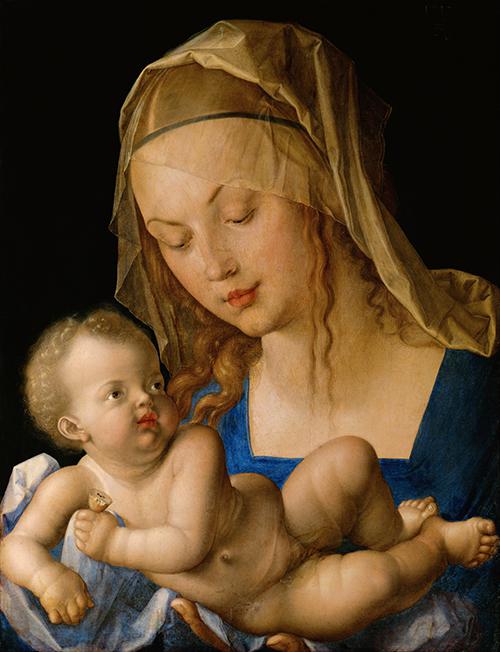PSYCHOANALYSIS
4.4
Psychoanalysis and its Critics
The criticism directed at Freud’s psychoanalysis was both conceptual and methodological.
Freud’s psychoanalysis is one of the most popularized theories in psychology but it was, from its conception, not without critics. A paper by Haberman, “A Criticism of Psychoanalysis”, published in 1914 in the “Journal of Abnormal Psychology”, one of the first journals in psychology dedicated to psychopathology, summarizes the ambivalent reception of Freud’s theory:
“Of the many “parts” to the Freudian theory, not all are condemned, and some are lauded by even its severest critics. Which are condemned and why? Let us try to give some acceptable answer. The “parts” of the theory may be enumerated as follows: The infantile or childhood’s sexual trauma as cause of hysteria; the pan-sexualism of mental life which makes every trend revert finally to the repressed material, always sexual, forming a massive background — subground — of the mind, namely a specially described “unconscious’”; the discovery of such repressed ideas by a particular method of analysis or translation in which sexuo-symbolism is employed; the curing of the neuroses by such psycho-(sexuo-) analysis, etc. In a general way it may be said that the critics of these theories have admitted that Freud has contributed much to our science by insisting on the psychogenic in determining the nature of the neuroses and in pointing out the importance of past psychic experiences in their bearing upon etiology, and that his intense and prolonged occupation with the patient gave us a better way of penetrating the mental life than we had used before. They have pointed to certain “mechanisms” as being possibly of potential value and deserving of deeper study, such as “Verdraengung” or the question of the working of “affects” of unconscious or partly conscious elements, etc. (Isserlin), though they at the same time emphasize the fact that these mechanisms have in no way as yet been shown to exist and that the method employed by Freud to prove their existence is scientifically false.”
In sum, many thought it interesting and worthwhile to investigate the role of past psychological experiences in the development of psychopathology as well as the idea of using a “talking cure” to treat mental health problems – what would turn out to be a foremost application of psychology – “Psychology has stepped down from the university chair into the marketplace” (Samuel, 2013). Yet, there was skepticism about at least two aspects of the theory.
First, conceptually, there were doubts about the “pansexual” nature of the theory. As a consequence, a number of views emerged that maintained the importance of some aspects proposed by Freud yet simultaneously aimed to present alternatives. For example, Alfred Adler, who had interreacted extensively with Freud in Vienna also agreed with the importance of unconscious processes but came to propose that mental health problems arose not from misconducted or repressed sexual energy but from feelings of insecurity. In turn, Carl Jung, initially a protégé of Freud, distanced himself increasingly from Freud’s views, also using the term libido as a more general term to describe mental energy, as opposed to sexual energy, and introducing additional concepts, such as collective unconscious and personality types. These deviant positions were taken by Freud as personal affronts and not seldomly did he adopt a harsh tone towards his once close colleagues, writing for example of Jung’s positions as “unintelligible, muddled, and confused.” This reinforced the centrifugal tendency for psychoanalytic tradition to break up into different approaches with distinct emphases and terminology.
Second, methodologically, there was skepticism surrounding the use of case studies and subjective interpretation, with little attention to systematic experimentation or longitudinal observation of patients or developing children. Even decades later, in 1969, when reviewing psychodynamic theory on infant-mother relations, Mary Ainsworth, a developmental psychologist known for her attachment theory, would conclude: “It is trite to observe that psychoanalytic theorizing about infancy has been handicapped by a lack of systematic empirical research.” Over the course of the 20th century, the work of psychologists like Mary Ainsworth or John Bowlby led to a rejection of the sexuality-based view of the infant-parent relations and a more ethological perspective that proposes the existence of several behavioral systems that fulfill evolutionary adaptive functions, including safety, but also learning and exploration (Ainsworth, 1969).
All in all, Freud’s psychoanalysis left a rich legacy, including a close attention to unconscious processes, and the role of development to psychopathology that received continued attention in the following decades. Nevertheless, psychoanalysis also represented an Achilles-heel to those psychologists who wanted to see its new science as a bastion of methodological rigor.

Dürer’s painting is not a realistic portrait of mother and child. Similarly, psychoanalysis’ emphasis on the role of sexuality provides a distorted view of reality that neglects aspects like learning and exploration that are central to infant-parent relations.
(Public domain; Oil painting by Albrecht Dürer, 1512)
References
Ainsworth, M. D. (1969). Object relations, dependency, and attachment: A theoretical review of the infant-mother relationship. Child Development, 40(4), 969–1025. https://doi.org/10.2307/1127008
Haberman, J. V. (1914). A criticism of psychoanalysis. Journal of Abnormal Psychology, 9(4), 265–280. http://doi.org/10.1037/h0070291
Samuel, L. R. (2013). Shrink: A cultural history of psychoanalysis in America. University of Nebraska Press.
Please note that certain links to journal articles are only available within the eduroam network if they concern publications for which the university has a campus license. If you are a member of the University of Basel and want to access university resources from home, you will need to install a VPN client.
Lizenz
University of Basel
